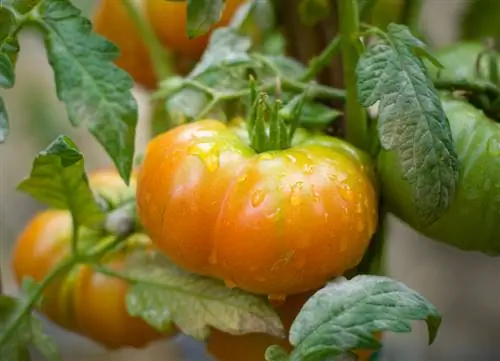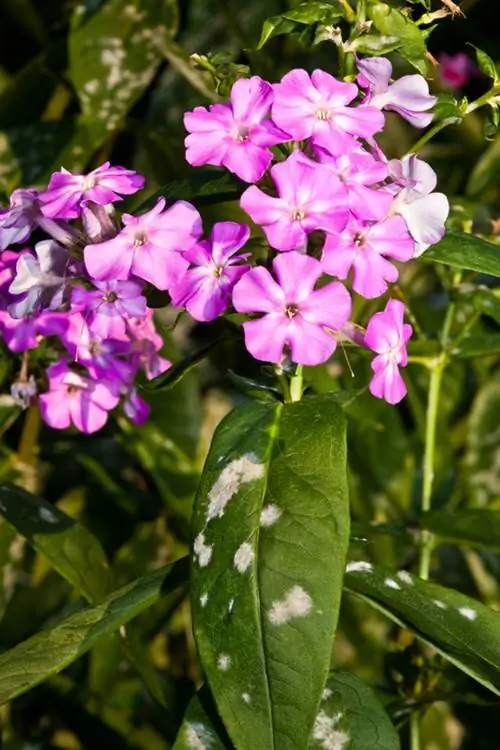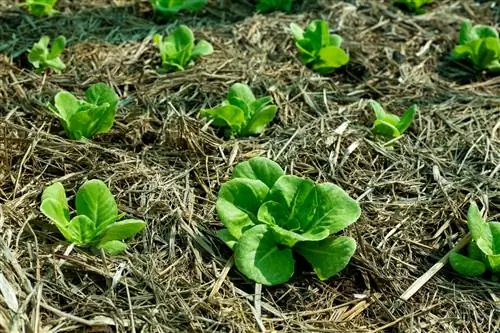- Author admin [email protected].
- Public 2023-12-16 16:46.
- Last modified 2025-06-01 06:02.
Mildew represents a particular challenge in the cultivation of tomatoes because classic sprays have a counterproductive effect in biological disease control. You can find out why this is the case and how you can still take action against the fungal infection here.

How to fight mildew on tomatoes naturally?
To combat powdery mildew on tomatoes without chemical sprays, you can dust primary rock powder on the leaves, promote beneficial insects such as fungal ladybirds and squirrel hoverflies and use mixed culture with basil and garlic.
Sprays on tomatoes - fight evil with evil?
If a mealy-white patina spreads on the leaves of tomato plants in summer, the fungal infection powdery mildew has struck. A wide range of biological sprays are now available to combat this widespread tomato disease. The catch is that the sword of Damocles of brown rot is constantly hovering over the tomato bed. So should the devil be cast out with Beelzebub?
The top priority in defending against devastating late blight is consistently protecting a tomato plant from moisture. Consequently, it makes little sense to use milk, soft soap solution or plant manure to combat relatively harmless mildew, the hated late blight and brown blight. Good to know that there are sensible alternatives. In harmony with nature and without using chemicals.
Counteract mildew with primary rock
It has been lying in the ground since ancient times and has numerous advantages for the environmentally conscious hobby garden. Primary rock powder contains, among other things, silica, which protects plant cells against infection with mildew. How to use the remedy:
- Fill primary rock powder into a powder syringe
- dust on the dewy leaves early in the morning
- repeat every 2-3 days until the infestation pressure subsides
As a positive side effect, the primary rock flour provides heavy eaters with additional nutrients because it contains valuable minerals and trace elements.
These beneficial insects simply graze on fungal spores
Beneficial insects now play a central role in organically managed hobby gardens. This doesn’t just apply to repelling pests. The following two insects like to eat mildew spores:
- Mushroom ladybird (Psyllobora vigintiduopunctata): The larvae of these ladybirds feed primarily on mildew
- Sixteen-spotted ladybirds (Halyzia sedecimguttata): The adult beetles eat the fungal spores as well as their offspring
- Skull hoverfly (Myathropa florea): These and other sawflies eat, among other things, mildew fungi
Beneficial insects like to settle in the naturally designed garden. Offer places to retreat, such as an insect hotel, rotten tree trunks, piles of leaves and brushwood. In addition, specialist retailers offer specially bred larvae to specifically release the insects in the garden or greenhouse.
Tips & Tricks
If you plant tomatoes in a mixed culture with basil and garlic, these measures will prevent mildew infestation.






